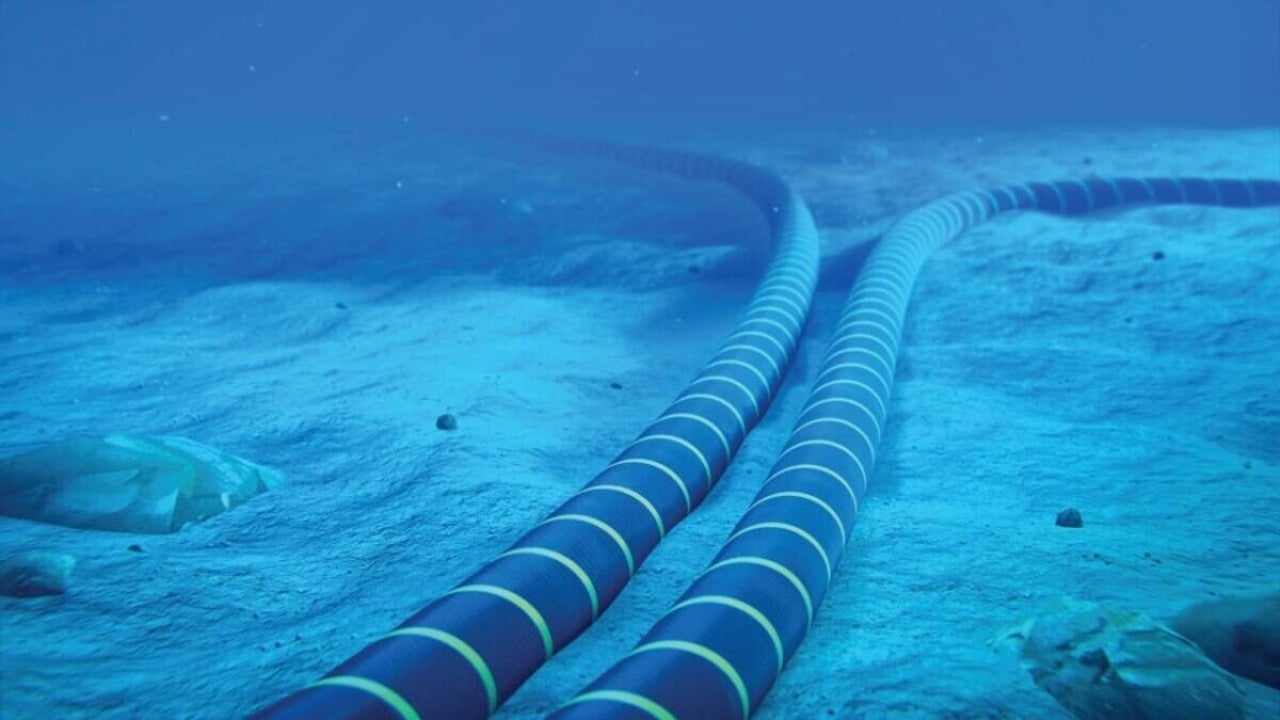News
From Sea to Screen: How 500 Submarine Cables Shape the Modern Internet
Cables across the ocean floor have become vital connections for the world

- July 31, 2023
- Updated: March 8, 2024 at 8:35 AM
When you call your friend who is studying in the United States and can have a real-time, high-definition video call, it’s all possible thanks to a network of submarine cables that traverse the cold ocean floor.
Indeed, the connection between different continents is made possible by large cables transmitting images and sounds at the speed of light through strands of fiberglass as thin as a hair but thousands of kilometers long.
These cables, as thick as a garden hose, are wonders of high technology. The fastest one, the transatlantic cable called Amitié and funded by Meta, Microsoft, and others, can transport 400 terabits of data per second.
That’s 400,000 times faster than the broadband in your home, if you’re lucky enough to have a gigabit service not available to everyone.
A technique that is more than 150 years old
And yet, submarine cables can also be low-tech, coated in tar, and laid by ships using a process that is essentially the same as the one used in the 1850s to lay the first transatlantic telegraph cable.
Modern cables can transmit up to 250 terabits per second of data, but their technology dates back to the 19th century when scientists and engineers like Werner Siemens discovered how to lay telegraph cables under rivers, the English Channel, and the Mediterranean Sea.
Many of the early cables failed, in part because the weight of a cable laid on the ocean floor would cause it to snap in two. The first successful transatlantic cable project operated for only three months in 1858 before failing and could send little more than one word per minute.
While satellite links are becoming increasingly important with systems in orbit like SpaceX’s Starlink, submarine cables remain the workhorses of global trade and communications, carrying over 99% of the traffic between continents.
TeleGeography, an analysis company that tracks the industry, has identified 552 existing submarine cables, and more are being planned as the internet expands across the globe, permeating every corner of our lives.
You probably know that tech giants like Meta, Microsoft, Amazon, and Google run the brains of the internet. They are referred to as “hyperscalers” because they operate hundreds of data centers filled with millions of servers. However, you may not be aware that they are increasingly managing the nervous system of the internet as well.
According to consulting firm McKinsey, two-thirds of the internet traffic comes from hyperscalers. The demand for data from hyperscaler submarine cables is growing at a rate of 45% to 60% each year.
The data demand from hyperscalers is not solely due to their own content needs, such as Instagram photos and YouTube videos that are viewed worldwide.
These companies often operate cloud computing businesses like Amazon Web Services and Microsoft Azure, services used by millions of businesses worldwide.
The early submarine cables covered major communication routes, such as the one between London and New York. These routes remain crucial, but new ones are taking the bandwidth away from the well-trodden paths: the west coast of Greenland, the volcanic island of Saint Helena off the west coast of Africa, the southern tip of Chile, the Pacific island nations, and more remote locations.
This is all part of a gradual transformation of submarine communications. While cables were once the exception, linking only a few high-priority urban centers, they are now becoming a mesh that spans the entire globe.
In other words, submarine cables are starting to resemble the rest of the internet, despite their high costs and exotic technology.
Why submarine cables are spreading
The economic advantages are considerable. According to McKinsey, submarine cable connections result in faster internet speeds, lower prices, a global increase in employment by 3% to 4%, and a boost in economic activity by 5% to 7%.
As the demand for traffic from hyperscalers increased, traditional telecommunications companies that used to install submarine cables were withdrawing from the market.
Hyperscalers initially invested in external projects, which was natural as submarine cables are typically operated by consortia of multiple allies. However, more and more hyperscalers are now building their own projects.
These cables are not cheap: According to Mauldin, the installation of a transatlantic cable costs between $250 million and $300 million.
The cables are crucial. If one Azure region fails, data centers in another region take over to ensure that customer data and services continue to function.
In the United States and Europe, terrestrial cables bear most of the load, but in Southeast Asia, submarine cables predominate. That’s why the internet wouldn’t be what it is today without submarine cables.
Some of the links added in the article are part of affiliate campaigns and may represent benefits for Softonic.
Journalist specialized in technology, entertainment and video games. Writing about what I'm passionate about (gadgets, games and movies) allows me to stay sane and wake up with a smile on my face when the alarm clock goes off. PS: this is not true 100% of the time.
Latest from Chema Carvajal Sarabia
- It seems that Google has decided to once again cancel one of its most anticipated products
- The reason we don't have Alexa with AI yet? It's still too dumb
- Technology has just recreated for the first time in history the voice of this English king who died 600 years ago
- The video game industry has contracted a dangerous disease: nostalgia
You may also like

It seems that Google has decided to once again cancel one of its most anticipated products
Read more

A Chinese laboratory has developed a reasoning AI model capable of competing with OpenAI
Read more

The Fortnite Club subscription becomes more enticing than ever thanks to this spectacular change
Read more

After the huge success of Inside Out 2, Riley's inner world is back with the trailer from Dream Productions
Read more

Unlock Huge Savings with BlueStacks’ with Exclusive In-App Discounts
Read more

Apple announces its promotions for Black Friday: which products benefit and how much
Read more